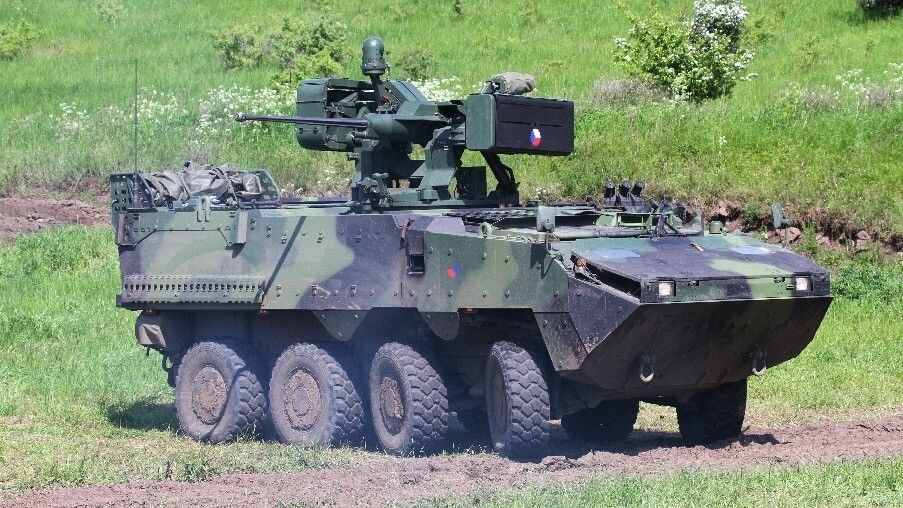Armed Forces
Czech Response to the Threat from the East - More Pandur APCs

Czech Ministry of Defence has signed a contract, the goal of which would be to acquire additional 20 Pandur II wheeled APCs. The agreement could have been signed thanks to the fact that defence expenditure limits have been expanded, following the outbreak of the Ukrainian crisis.
The contract value is defined as CZK 2.069 million, which is an equivalent of USD 82 million. Within the framework of the aforesaid agreement, Tatra Defence Vehicles facility has been tasked with delivering 20 carriers, including 6 command vehicles. The said platforms are going to be license-manufactured in the Czech Republic.
Czech Army has already been operating a number of Pandur II wheeled APCs, some of which utilize Israeli remote control turret modules fitted with 30 mm cannons and Spike-LR ATGM launchers. In total, 107 APCs have been acquired so far, without taking into the equation the new batch. Originally it was assumed that a much higher quantity of those vehicles – up to 199 examples – would be purchased. Nonetheless, the economic crisis created a need to implement relevant cuts in the area of defence expenditure.
After the Ukrainian crisis broke out, Prague decided to gradually increase the defence expenditure. According to the assumptions, the share of the defence budget in the GDP is to reach the level of 1.4%, by 2020. Within the period between 2014 and 2019, the spending may go up from the level of CZK 39.1 billion, to CZK 62.7 billion – this is, nominally, an increase of around 60%.
The Czechs are also going to provide more assets to the units existing within the army, creation of an additional infantry brigade, so that three such units remain at disposal of the military, is also being scrutinized. In such scenario, a “light”, medium (using the Pandur APCs) and heavy (using the tracked vehicles) units are going to be formed. Moreover, a tendering procedure related to a new air defence system which is to replace the old Kub SAMs is also in progress, meanwhile new RBS 70 NG VSHORAD suites have already been contracted. Gripen jets are also being modernized. They are to be provided with a ground-strike capability and ability to use PGMs.
READ MORE: Czech Republic Doubles Its Defence Expenditure. “Modernization, More Troops, New Units”
Acquisition of a higher number of the Pandur II vehicles makes it possible to partially reverse the cuts, implemented during the preceding period. The vehicles are going to be manufactured at the Czech factory. In line with the information released by the domestic industry, the contribution made by the Czechs is going to be higher, as compared to the earlier projects.
On the other hand, one should remember that the scope of structural cuts implemented in the Czech Republic, prior to Ukrainian crisis, as well as the cuts implemented in other V4 Group states (Slovakia, Hungary), were altogether much wider, even wider than the reductions introduced in Poland. After the aforesaid countries were included in NATO, a threat that could potentially be posed by a large scale conflict was not being taken into account. Thus, recovery of the capabilities is going to be time consuming, while the effects of the process will only be made visible over a longer period of time.
